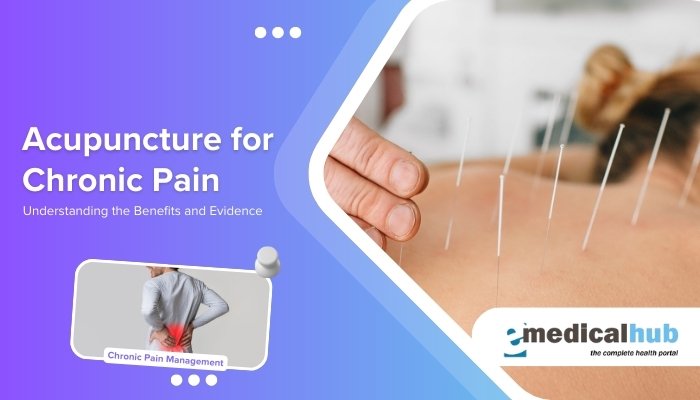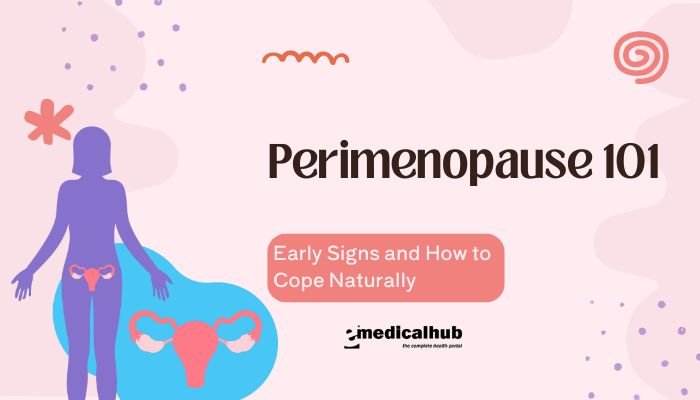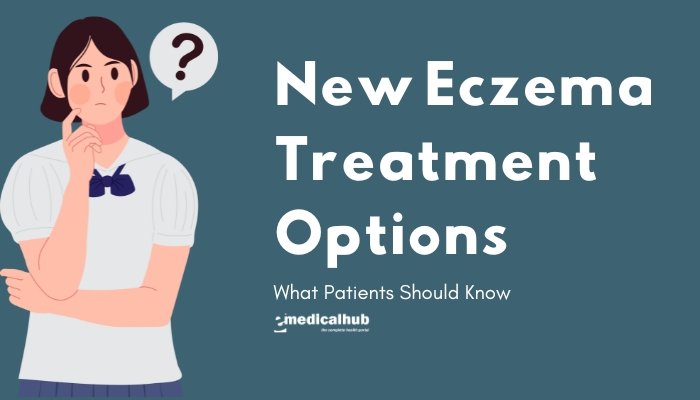Introduction
Chronic pain affects millions of people worldwide, often diminishing quality of life and limiting daily activities. Conventional pain treatments—such as medications, physical therapy, or invasive procedures—may not always provide complete relief or can be accompanied by undesirable side effects. In this context, acupuncture, a key component of traditional Chinese medicine (TCM), has emerged as a popular complementary therapy for chronic pain management.
Acupuncture involves inserting thin, sterile needles at specific points on the body to stimulate nerves, muscles, and connective tissue. Proponents suggest that it can help rebalance the body’s energy (or “Qi”), reduce inflammation, and trigger natural pain-relieving mechanisms.
While its ancient origins and widespread use in Eastern cultures lend acupuncture an air of credibility, modern scientific studies have produced mixed results regarding its efficacy.
This article explores the mechanisms behind acupuncture, reviews the current evidence on its benefits for chronic pain, examines its applications across various conditions, and provides practical safety considerations.
Whether you’re new to acupuncture or looking to deepen your understanding, this comprehensive guide will help you weigh its potential benefits and limitations in the context of chronic pain management.
Disclaimer: The information provided in this article is for general educational purposes only and does not replace professional medical advice. If you have chronic pain or health concerns, please consult a qualified healthcare provider before starting any new treatment, including acupuncture.
Understanding Acupuncture
What Is Acupuncture?
Acupuncture is a therapeutic practice that has been used for thousands of years as part of traditional Chinese medicine. It involves the insertion of very fine, sterile needles into specific points on the body known as acupoints. The aim is to restore balance in the body’s energy flow (Qi) and stimulate physiological responses that promote healing and pain relief.
Traditional Chinese Medicine (TCM) Perspective
According to TCM, the body’s health depends on the balanced flow of Qi through energy pathways called meridians. Disruptions in Qi are believed to cause pain and illness. Acupuncture seeks to:
- Restore Energy Balance: By stimulating specific acupoints, practitioners aim to unblock and redirect Qi.
- Enhance Vitality: The practice is thought to improve overall well-being and organ function.
- Prevent Disease: Regular sessions are believed to promote harmony and prevent the onset of illness.
Western Medical Perspectives
In Western medicine, acupuncture is understood through several mechanisms:
- Neurotransmitter Modulation: Needle insertion may stimulate the release of endorphins, serotonin, and other pain-relieving chemicals.
- Nervous System Activation: Acupuncture can activate the peripheral nervous system, influencing brain regions involved in pain processing.
- Inflammation Reduction: Some studies suggest that acupuncture may reduce local and systemic inflammation.
- Circulation Improvement: Enhanced blood flow to the treated areas may aid in tissue repair and pain reduction.
How Acupuncture May Alleviate Chronic Pain
Neurophysiological Mechanisms
Research indicates that acupuncture might relieve pain by:
- Stimulating Endorphin Production: Endorphins act as natural painkillers and can produce feelings of well-being.
- Modulating Pain Pathways: Acupuncture can influence the transmission of pain signals to the brain by altering nerve activity.
- Activating the Descending Inhibitory System: This system suppresses pain signals at the spinal cord level.
- Reducing Inflammation: The insertion of needles may lead to localized anti-inflammatory effects, decreasing pain in inflamed tissues.
Psychological and Stress-Reduction Effects
- Placebo and Expectation: Some benefits of acupuncture may be linked to patient expectations and the therapeutic encounter.
- Stress Reduction: The calming environment and ritual of acupuncture can lower stress levels, which in turn may help alleviate pain.
- Mind-Body Connection: Acupuncture encourages a holistic approach to healing, often enhancing patients’ perceptions of control over their pain.
Acupoint Specificity and Individualization
Practitioners select acupoints based on the individual’s symptoms and overall health:
- Tailored Treatments: Each session is customized; for example, points on the lower back may be targeted for chronic lumbar pain, while other points may be chosen for headaches.
- Combination with Other Modalities: Acupuncture is often combined with herbal remedies, massage, or physical therapy to enhance overall pain management.
Evidence on Acupuncture for Chronic Pain
Chronic Lower Back Pain
Several systematic reviews and meta-analyses have evaluated acupuncture for chronic lower back pain:
- Efficacy: Many studies report that acupuncture can provide significant pain relief and improve function compared to no treatment or sham acupuncture.
- Comparisons with Conventional Therapies: While some studies suggest acupuncture is comparable to conventional treatments, others highlight its role as a complementary therapy that may enhance overall pain management.
Osteoarthritis
- Knee Osteoarthritis: Randomized controlled trials have found that acupuncture can reduce pain and improve mobility in individuals with knee osteoarthritis.
- Mechanisms: Benefits may stem from improved circulation, reduced inflammation, and stimulation of local tissue repair.
Headaches and Migraines
- Migraine Prevention: Acupuncture has been shown to reduce the frequency and intensity of migraines in some patients.
- Tension-Type Headaches: Evidence suggests that regular acupuncture sessions may alleviate chronic tension headaches, potentially through modulation of neurotransmitter activity.
Fibromyalgia and Widespread Pain
- Symptom Reduction: Some studies have found that acupuncture can lessen pain and improve quality of life in fibromyalgia patients.
- Multifactorial Benefits: Improvements in sleep quality, fatigue, and overall well-being have been noted, although results vary among individuals.
Limitations and Mixed Findings
- Placebo Effect: Some studies report modest differences between real and sham acupuncture, suggesting that placebo effects or patient expectations might play a role.
- Variability in Protocols: Differences in acupuncture techniques, session frequency, and practitioner skill can lead to inconsistent results.
- Need for Standardization: More rigorous, standardized research protocols are necessary to draw firm conclusions about long-term benefits.
Practical Considerations for Acupuncture Treatment
Finding a Qualified Practitioner
- Credentials: Look for licensed acupuncturists with proper certification and training in TCM or medical acupuncture.
- Experience: Choose practitioners with experience treating chronic pain conditions similar to yours.
- Referrals: Ask for recommendations from healthcare providers or trusted friends.
- Consultation: Schedule an initial consultation to discuss your symptoms, treatment goals, and any concerns.
What to Expect During a Session
- Initial Evaluation: Your acupuncturist will conduct a comprehensive evaluation, which may include questions about your medical history, pain levels, lifestyle, and possibly tongue and pulse diagnosis.
- Treatment Plan: A customized treatment plan will be developed, which may involve multiple sessions over several weeks.
- Procedure: During a session, fine, sterile needles will be inserted at selected acupoints. You may feel a slight pinch or tingling sensation, but discomfort is generally minimal.
- Relaxation: Many patients report feeling deeply relaxed during and after sessions.
Integrating Acupuncture with Conventional Treatments
- Complementary Approach: Acupuncture is often most effective when used alongside conventional therapies like physical therapy, medication, or exercise.
- Open Communication: Inform all your healthcare providers about your acupuncture treatments to ensure coordinated care.
- Trial Period: Give acupuncture several sessions (usually 6-12) to determine if you experience meaningful improvements.
Safety and Side Effects
Common Side Effects
Acupuncture is generally considered safe when performed by a qualified practitioner. However, minor side effects may occur:
- Bruising or Soreness: Small bruises or tenderness at needle sites.
- Minor Bleeding: Occasionally, a small amount of blood may appear.
- Fatigue or Dizziness: Some individuals report feeling light-headed post-treatment, which usually resolves quickly.
Contraindications and Precautions
- Bleeding Disorders: If you have a bleeding disorder or are on blood thinners, discuss with your practitioner.
- Pregnancy: Certain acupoints are contraindicated during pregnancy.
- Skin Conditions: Avoid areas with infections, rashes, or lesions.
- Medical Conditions: Always inform your acupuncturist of any chronic health issues or medications you’re taking.
Ensuring a Safe Treatment
- Sterile Needles: Verify that single-use, disposable needles are used to prevent infection.
- Professional Environment: Ensure the clinic or treatment area is clean and professionally maintained.
- Communication: Speak up if you experience discomfort during a session, so the practitioner can adjust needle placement or technique.
Combining Acupuncture with Lifestyle Modifications
Diet and Nutrition
A balanced diet can support the body’s healing processes and enhance the effects of acupuncture:
- Anti-Inflammatory Foods: Incorporate fruits, vegetables, whole grains, and omega-3-rich foods.
- Hydration: Adequate water intake supports overall body function and tissue repair.
- Herbal Supplements: Some herbal remedies complement acupuncture; however, consult your healthcare provider before combining treatments.
Physical Activity
Regular, moderate exercise can further enhance pain relief and improve overall well-being:
- Stretching and Flexibility: Gentle stretching can reduce muscle tension and improve mobility.
- Aerobic Exercise: Activities like walking or swimming boost circulation and cardiovascular health.
- Strength Training: Maintaining muscle strength supports joints and reduces pain in chronic conditions.
Stress Management and Mindfulness
Acupuncture’s benefits are often amplified when combined with stress-reduction techniques:
- Mindfulness Meditation: Fosters a calm mental state that complements acupuncture’s relaxing effects.
- Yoga or Tai Chi: Enhance balance, flexibility, and stress management.
- Adequate Sleep: Ensure 7-9 hours of quality sleep to support recovery and hormonal balance.
Future Directions and Research Needs
Standardization in Research
- Consistent Protocols: Future studies should aim for standardized acupuncture protocols to reduce variability and improve comparability.
- Long-Term Studies: More research is needed to evaluate the long-term efficacy and safety of acupuncture for various chronic pain conditions.
- Objective Outcome Measures: Incorporating imaging, biomarkers, or standardized pain scales can help quantify the benefits more reliably.
Integration with Modern Medicine
- Complementary Care Models: Integrating acupuncture into conventional pain management clinics may offer holistic benefits.
- Patient-Centered Approaches: Tailoring treatments based on individual needs, combined with conventional therapies, is likely to yield the best outcomes.
- Technological Advancements: Emerging tools like laser acupuncture and electroacupuncture are areas for future exploration in improving efficacy.
Broader Applications
- Beyond Pain: Research is expanding into acupuncture’s benefits for mental health, digestive disorders, and even immune function.
- Preventative Care: Acupuncture might also serve as a preventative measure by maintaining overall balance and reducing the likelihood of chronic pain development.
Frequently Asked Questions (FAQ)
How many sessions of acupuncture are typically needed for chronic pain relief?
While individual responses vary, many practitioners recommend 6-12 sessions to assess effectiveness and make adjustments.
Is acupuncture effective for all types of chronic pain?
Acupuncture has shown promising results for lower back pain, osteoarthritis, headaches, and fibromyalgia. However, effectiveness can differ depending on the condition and individual.
Can acupuncture be used alongside conventional medications?
Yes, many patients use acupuncture as a complementary treatment. It’s important to inform your healthcare providers about all treatments you’re receiving.
Are there any risks associated with acupuncture?
Acupuncture is generally safe when performed by a qualified practitioner. Minor side effects, such as bruising or soreness at needle sites, can occur. Serious complications are rare.
What should I look for in an acupuncture clinic?
Look for certified practitioners with appropriate licenses, a clean and professional environment, and positive patient reviews or referrals from trusted sources.
How does acupuncture work to reduce pain?
Acupuncture may work by stimulating the release of endorphins, modulating pain pathways, reducing inflammation, and promoting improved blood flow to affected areas.
Can acupuncture help with conditions other than pain?
Yes, acupuncture is also used to manage anxiety, depression, digestive issues, and other health conditions, though the evidence varies by condition.
Is acupuncture covered by insurance?
Coverage varies by insurance provider and region. It’s advisable to check with your insurer to understand what treatments are covered under your plan.
How do I know if acupuncture is right for me?
Consider your pain condition, previous treatment responses, and personal preferences. A consultation with a healthcare provider or a licensed acupuncturist can help determine suitability.
What is electroacupuncture?
Electroacupuncture is a variant where a small electrical current is passed through the needles to enhance stimulation. It is often used for conditions that may benefit from stronger stimulation, such as severe pain.
How long do the benefits of acupuncture last?
Duration varies; some patients experience immediate relief, while others may require ongoing sessions to maintain benefits.
Are there any contraindications for acupuncture?
Individuals with bleeding disorders, severe needle phobia, or certain skin conditions may need to take extra precautions. Always consult a healthcare provider if you have concerns.
Conclusion
Acupuncture has emerged as a compelling complementary therapy for chronic pain management, offering a holistic approach that integrates ancient techniques with modern scientific insights. By stimulating natural pain-relief mechanisms, reducing inflammation, and promoting a balanced flow of energy, acupuncture may help alleviate various types of chronic pain—such as lower back pain, osteoarthritis, and migraines—while also contributing to overall well-being.
Although research findings are mixed and sometimes attribute benefits partly to placebo effects, a significant body of evidence supports the efficacy and safety of acupuncture when administered by qualified practitioners. For many patients, acupuncture serves as a valuable addition to conventional treatments, improving quality of life without the risks associated with certain pharmacological therapies.
Ultimately, the decision to try acupuncture should be made in consultation with healthcare professionals, taking into account your specific condition, treatment history, and personal preferences. When integrated into a broader, patient-centered approach to pain management, acupuncture can play a meaningful role in promoting health, easing discomfort, and enhancing long-term vitality.
References
- Vickers AJ, Vertosick EA, Lewith G, et al. Acupuncture for chronic pain: Update of an individual patient data meta-analysis. J Pain. 2018;19(5):455-474.
- Linde K, Allais G, Brinkhaus B, et al. Acupuncture for migraine prophylaxis. Cochrane Database Syst Rev. 2016;(6):CD001218.
- Manheimer E, Cheng K, Linde K, et al. Acupuncture for chronic low back pain. Cochrane Database Syst Rev. 2010;(1):CD008670.
- Lee MS, Shin BC, Ernst E. Acupuncture for the treatment of fibromyalgia: A systematic review of randomized clinical trials. Pain. 2008;138(2):285-293.
- Ezzo J, et al. Acupuncture for osteoarthritis of the knee. Cochrane Database Syst Rev. 2006;(1):CD002946.
- Vickers AJ, et al. Acupuncture for chronic pain in primary care: A randomized controlled trial. JAMA Intern Med. 2012;172(10):e1160-e1168.
- Zhao L, et al. Efficacy of acupuncture in the treatment of anxiety: A meta-analysis of randomized controlled trials. J Psychiatric Res. 2017;87:24-34.
- Sherman KJ, et al. Acupuncture for chronic pain: Does it help? J Pain. 2015;16(2):193-204.
- Cherkin DC, Sherman KJ, Deyo RA, et al. A randomized trial comparing acupuncture, simulated acupuncture, and usual care for chronic low back pain. Arch Intern Med. 2009;169(9):858-866.
- Ma Y, et al. The effectiveness of acupuncture in the treatment of chronic pain: A systematic review and meta-analysis. J Pain Res. 2019;12:2451-2465.
- Qin L, et al. Acupuncture for tension-type headache: A systematic review and meta-analysis. BMC Complement Altern Med. 2019;19(1):221.
- Smith CA, et al. Acupuncture for anxiety and anxiety disorders. Cochrane Database Syst Rev. 2018;12:CD007954.







